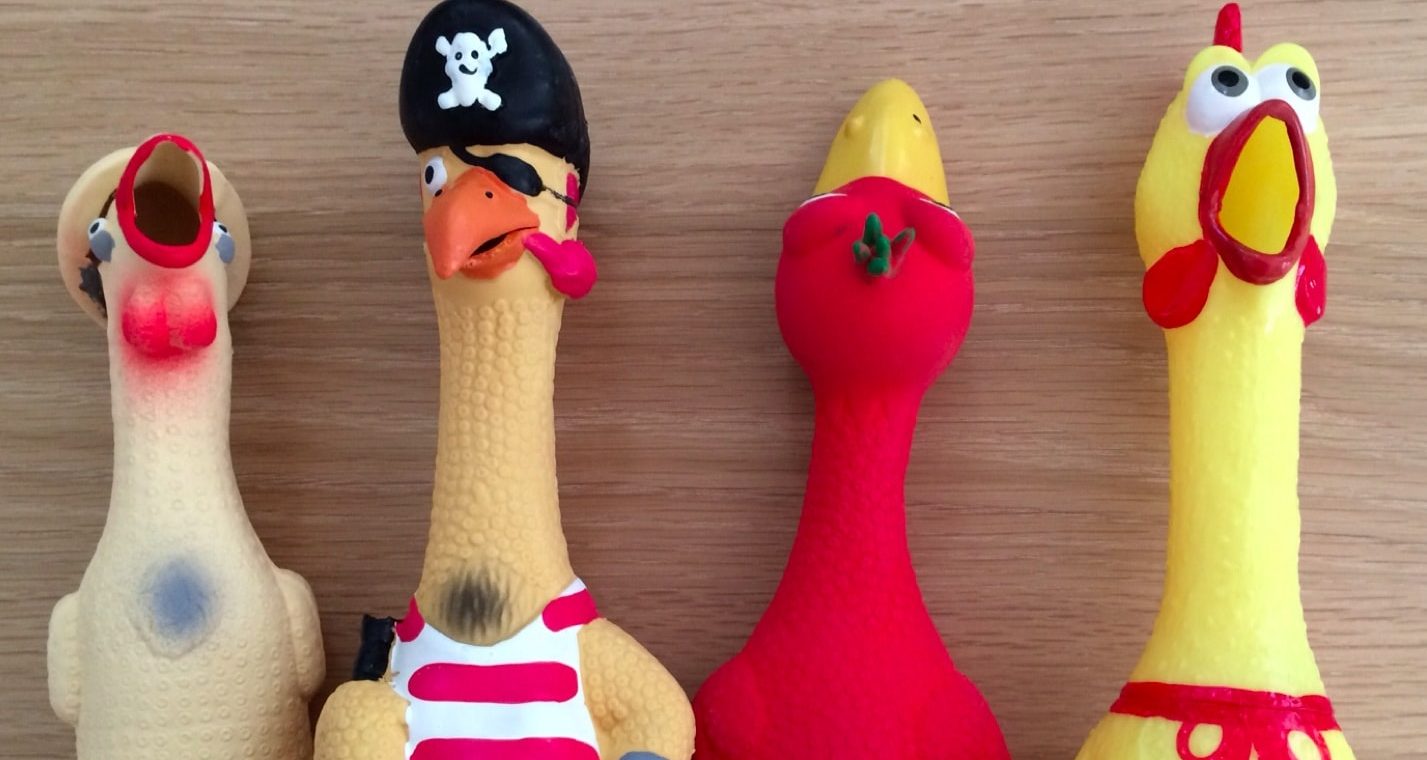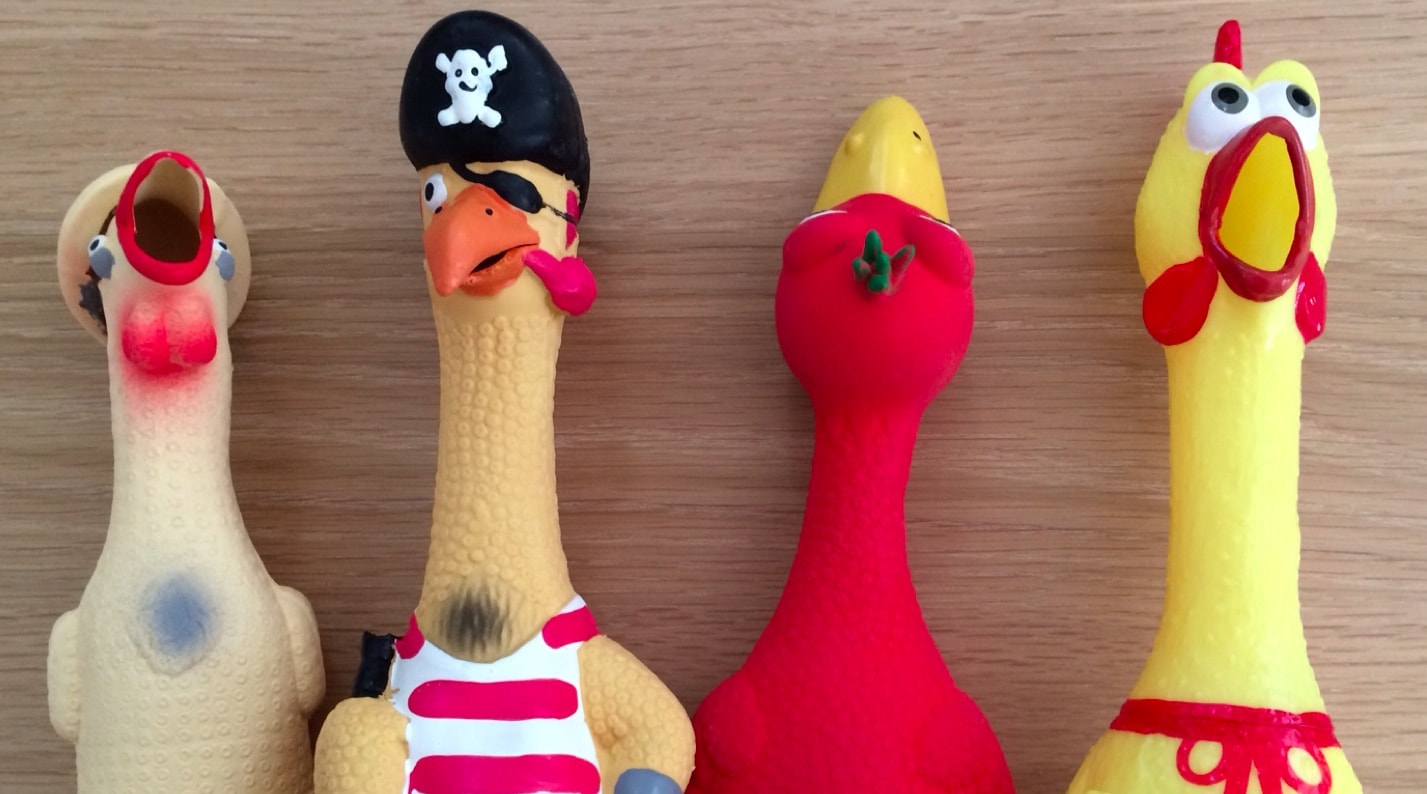Don’t we all love meetings that go on forever? And people who love listening to the sound of their own voice? Obviously, the answer is “no”. Do we all want better meetings? Yes!
I’ve sat in I-don’t-know-how-many business meetings over the course of my career where the discussion went forever, but was going nowhere. The worst part is that everybody knew it. But nobody felt like it was their place to say – much less do – something about it. Awkward…
Since I joined Atlassian as Head of Design five years ago, I’ve participated in a ton of meetings and workshops and offsites. We have a highly collaborative culture that values both diverse thinking and consensus. So we get together to discuss our work a lot.
And just like at every other company, I sat in meetings that went in circles, or dragged on because someone made their point 5 minutes ago but kept talking and nobody wanted to be the one to shut them up. Then one day, a rubber chicken changed my life.
His name is Helmut the Facilitation Chicken. His job is to shut people up. But in a nice way.
Why a chicken?
The rubber chicken idea came from a service designer. If you’ve never heard of service design, it’s a design discipline focused on the process and act of designing services and processes – either interactions between people, or interactions between people and technology. Like the process of opening a bank account, for example. Service designers run workshops to build a shared understanding of the problem they’re trying solve. As you might guess, there’s a lot of group discussion involved. To help manage time, they use a neutral object to signal when the conversation has strayed off-course. That’s where the rubber chicken comes in.
What can I say? It made me laugh. I was hooked.
But the workshops most businesses run are a bit different, so I didn’t bring that exact rubber chicken use case back to my team. It did spark an idea, though.
One of our designers is a fan of using a squeaky toy at offsites to let people know when it’s time to move on to a new activity. Ah-ha! Couldn’t a squawking rubber chicken be used for that? And double ah-ha! Perhaps a rubber chicken could be used to make every-day meetings better, signaling when the discussion (or speaker) needs to wrap up so we can move on.
As luck would have it, I spotted rubber chickens for sale at the supermarket shortly after that. I purchased a few, named the red one Helmut, and brought the whole flock to the office.
Successful facilitation = successful meetings
What prevented us from having more effective meetings was that some people were too talkative, and everyone else was too polite. It was very uncomfortable for the quieter or more junior people in the room to tell the more dominant and/or senior people “Hey, you’re off-point” or “You’ve made your point frikkin’ four times already”.
Not that this is surprising. Interrupting teammates is brutally hard for most people. Even people who are tasked with facilitating meetings struggle with it when they’re new to facilitation. But it’s a skill we desperately need to develop so we can streamline meetings, make them successful, and get on with our work.
So we ran a month-long experiment, using the rubber chicken in three ways.
1. Signaling that it’s time to move on
Many of the meetings we have on the design team are actually structured exercises, like journey mapping or sparring, where the hour is broken into smaller, timed activities. The way we do journey mapping is to start with 10 minutes building a back story for our target persona, then spend most of the time mapping out an interaction they have with our products. Whoever was facilitating a journey mapping session would get the group started on the back story, then squeak the rubber chicken when it was time to move to the next phase.
This worked well for getting the team used to the idea of the rubber chicken in general. And we needed that because the chicken is fun, but it’s also very loud and confronting.
If you’ve never tried journey mapping or sparring, you totally should. You can find instructions in the Atlassian Team Playbook – our free, no-BS guide to getting $#!t done.
2. Bringing the conversation back to center
3. Making sure everyone gets a chance to speak
When someone is rambling on in a meeting, you start to feel tension building up in the room. Everyone but the speaker realizes it’s time to let somebody else have a turn. It’s really painful.
As I said, shutting people up takes some courage, and it took my team a while to get comfortable squeaking the chicken to get the speaker’s attention. But the result was amazing. You could feel the tension disappear instantly. And then we’d get back on task.
Making meetings better is everyone’s job
Our longer meetings like journey mapping and strategy sessions are usually facilitated by whoever called the meeting. But not all meetings have a dedicated (or implied) facilitator, and even when there is one, it’s everyone’s job to stay on task. That means everyone is empowered to call each other out and get the meeting back on track.
I know rubber chicken-based meeting facilitation is pretty weird, especially at first. It feels awkward for the person who gets squeaked, and even more awkward for the squeaker. The most important thing is for the facilitator to introduce the concept at the beginning of the meeting explicitly give everyone the right to do it. Then lead by example a couple of times to sort of break the ice.
Consider running a mini version of the “rules of engagement” exercise at the beginning of longer workshops (instructions and tips in our Team Playbook). It’s an easy way to establish a social contract for the session that includes chickens or other squeaky toys.
As an additional hack, we sometimes nominated someone as the official squeaker. During a multi-day offsite, we rotated through the group and had different squeakers each day. Once people got comfortable with the whole thing, they actually started nudging the squeaker of the day – “Hey, you should squeak now”.
It was really interesting because it exposed some team dynamics. Who tends to stay quiet, who tends to dominate. You have to understand those things in order to be a really strong team.
Top 5 meetings and workshops for rubber chickens
Helmut is more useful in some meetings and workshops than others. If you’re having a hard time picturing the right venue for a rubber chicken, here are a few ideas.
1. Standups – It’s really important for each person to keep their updates and remarks brief. The very fact that you do this standing up helps, but sometimes people still get a bit long-winded or stray too far down into the weeds. Plus, the chicken makes a nice token to pass from person to person as everyone takes their turn.
2. Journey mapping – I’ve mentioned it a couple times already. This is a long exercise (90 minutes) with multiple parts. Squeaking is an easy way for the facilitator to let everyone know it’s time to move to the next bit.
4. Disrupt – This workshop is a super fun way to change up the way you’ve been thinking about a problem and generate new solutions. It also gets a bit chaotic (which is probably why it’s so fun). There are several iteration cycles, each lasting 10 minutes. The chicken squeak can cut through the chaos and signal the beginning of the next cycle. Plus, let’s be honest: a rubber chicken just feels right for an exercise named “disrupt”.
5. Retrospectives – Caution: squeak with care during a retro. We know this is a meeting where rambling tends to happen. But it’s also a meeting where people are supposed to be honest, open, and maybe even a little vulnerable. So psychological safety is important here. I don’t recommend using a squeaky toy during a retrospective unless squeaking is already an established part of your team’s culture.
Not every team will love it, but every team should try it
Facilitating effective meetings and workshops is a core strength of healthy, high-performing teams. We’ve used Helmut and his flock for a while within the design team, and they’ve helped us to dramatically improve how we run our workshops and offsites. In fact, they enjoyed some popularity across the whole company shortly after our one-month experiment. The idea caught on and people were really excited about it.
To be fair, not every team still uses rubber chickens in their meetings. But on the teams where it works, it really works. So even though I probably won’t reach my original goal of having a chicken in every meeting room in all of our offices, it’s made a difference for the hard-core fans.
I still take Helmut to some meetings, especially ones that I facilitate. If I’m meeting with my core team of design leads, though, I don’t need to bring him. We’re fairly mature as a team and at this point we’re comfortable interrupting each other without the help of a squeaky toy.
Does that mean Helmut was just a crutch? Maybe. He definitely helped us champion a positive cultural change and make our meetings more successful. And that’s the whole reason I gave Helmut at try (and a squeeze) in the first place.

